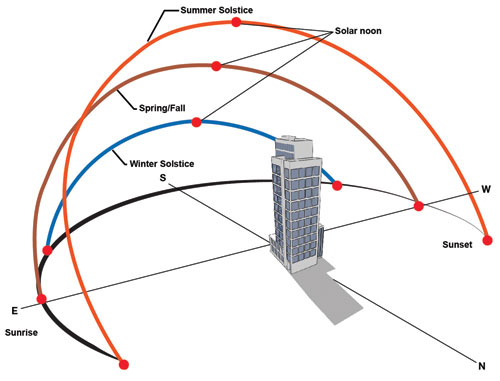Automated Shading and Light Systems
Because their eyes cannot effectively adjust to glare, building occupants will use their bodies to accommodate it. Squinting, furrowing a brow, lowering a head, contorting the neck, these are all examples of how a person will attempt to physiologically accommodate a hot spot in their visual field. This is often an unconscious, automatic response, like blinking when eyes are dry. Repetitive use of these accommodation tactics can lead to stress injuries and muscle fatigue that manifest in the form of eye strain, headaches, and computer vision syndrome. These problems are uncomfortable, fatiguing, and contribute to decreased productivity in the workplace.
An office space with views to the outside and no active daylight control sets the stage for potentially glaring conditions, because direct sunlight is often significantly more intense than the general lighting of the average office space. Daylight can range in intensity from a few foot-candles, on an overcast day, to over 1,000 foot-candles on a clear, sunny day. The average electric light level in an office space is between 35 -50 foot-candles. This extreme contrast in intensity paired with the highly visual tasks occurring in an office, explain why direct sunlight is prone to create glare in the office environment and why it is so detrimental to the functionality of the space. When direct sunlight streams through a window in an office, it can create distracting hot spots as it reflects off darker computer screens or desktops. The window itself can become a hot spot in the visual environment. If the difference between the intensity of the light streaming through the window and the ambient office light surrounding it is too great for the human eye to accommodate on its own, it will become uncomfortable to look at.
 |
The static nature of many traditional daylight control tools leaves them ill-equipped to manage the everchanging position of the sun as it transitions through the seasons. Image courtesy of MechoSystems |
The Limitations of Traditional Daylighting Tools
In the early 1900s, with the incandescent light source still in its infancy, the sun was the greatest, most reliable source of light. Architects paid particular attention to the siting and orientation of a building, because they relied on available daylight to illuminate the interior.









